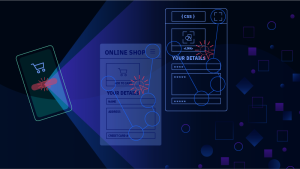Digital customers can be unpredictable and easy to lose to the competition–especially if frustrated with digital experience. Leveraging business analytics tools helps ensure their experience is zero-friction–a critical facet of business success. These tools can increase business observability by showing when and why digital experience, and more broadly IT, impacts business outcomes. They can also highlight where you should optimize to improve business outcomes.
Focusing on what matters most–while de-prioritizing less-impactful background issues– enhances agility and frees IT resources for optimization and innovation projects, providing multiple business analytics benefits to an organization.
How do business analytics tools work?
IT teams have traditionally relied on internal metrics to estimate business impact. Two common examples are the number of users affected by a problem or pages with the lowest Apdex scores. And while these may be good starting points, they don’t tell the whole story. More important is how these metrics impact business outcomes: progression through a funnel, conversion rates and value, fulfillment SLOs, and even net promoter scores (NPS). Monitoring business KPIs is necessary to make the connection between IT metrics and business outcomes, and business analytics tools can provide these critical IT business metrics.
Business analytics begins with choosing the business KPIs or tracking goals needed for a specific use case, then determining where you can capture the supporting metrics. In most cases, these tracking goals are already well-understood. Transactional metrics and context, behavioral data, and audience segments may be codified in your website’s data layer, as these are often used by marketing and web analytics solutions. Many business metrics may be captured through backend service call traces as transactions are processed. Business processes and events may be written to system logs or tracked and stored by an ERP solution, exposed via an application programming interface (API).
Break down IT and business silos
While analytics are one challenge, there remains another: silos. Much has been written about breaking down IT silos through cultural shifts and technology alignment. Complementing domain specialists with generalists is one such cultural shift reflective of the dynamic and interconnected nature of modern monitoring platforms. Another is viewing IT services as an iterative product rather than a once-and-done project. On the technology alignment front, the shift has been clearer, from multiple-point solutions to end-to-end observability platforms.
The same principles apply to what is perhaps the last great silo–that between business teams and IT operations. The challenges contributing to this silo include the following:
- The need for a high-level focus. It takes a generalist’s mindset to connect infrastructure, application, user experience, and security insights to business goals. (Imagine asking a highly specialized IoT architect to interpret why sales have suddenly slumped in Florida.)
- The ability to measure outcomes. Viewing IT services as an iterative product implies a focus on measuring outcomes, with ongoing refinements and updates that rely heavily on effective communication informed by a shared view of success metrics.
- Observability that extends into business metrics. Observability solutions must embrace – not just accommodate – business metrics as equal citizens to IT metrics, supporting thresholds, alerting, AI-driven root cause analysis, and automated remediation.
Improve customer experience beyond digital channels
When IT views service quality through the lens of business outcomes, there’s increased emphasis on the benefits of good customer experience. After all, business is increasingly conducted online where customer experience is dominated by digital experience.
For many applications, business KPIs are measured through conversion or goal completion metrics; do users successfully complete the desired task or action? To get there, users must navigate through a series of steps called the conversion funnel or user journey. Each step in the journey is an opportunity–to delight them and coax them closer to the goal or to disappoint them and see them abandon.
Of course, customer experience goes beyond just online transactions. What happens after an order is placed, a reservation is booked, or an application form is submitted? Fulfillment processes can be complex, involving multiple systems and manual steps. Tracking these with business analytics tools adds an end-to-end customer-centric perspective, which is key to ensuring that customer expectations are met. It’s through this outcome-oriented perspective that IT can move beyond digital experience to consider customer experience, aligning with business goals to better meet customer expectations.
Key use cases for business analytics tools
While there are an almost unlimited number of business analytics use cases, most will fit into one of these categories:
Business impact use cases evaluate business outcomes in the context of IT metrics. Through real-time visibility into business KPIs and supporting IT metrics, teams can correct problems before they impact business results. Questions you can answer may include, how does user experience impact conversions? At what point does degraded experience result in a drop in goal achievement?
Conversion analytics use cases complement popular conversion rate optimization (CRO) efforts with important perspectives on performance and usability. By optimizing conversion funnels, teams can reduce abandonments and increase conversion rates by answering questions like, which steps in a user journey result in significant abandonment? What are the common characteristics leading to abandonment?
Release validation use cases help ensure new releases meet their desired business goals. Monitoring these business goals for blue-green deployments, A/B testing, and canary releases provides timely business KPI feedback to app owners and product managers, complementing important technical metrics. This helps to answer questions such as, how does a new feature impact goal achievement? Should the feature be released or rolled back?
Experience reporting use cases focus on SLOs critical to successful business outcomes. These SLOs are often segmented by key audiences for increased granularity and business relevance. For example, are we meeting our response time SLO for each broker, subsidiary, or partner? How do SLO violations impact partner orders?
Business process monitoring use cases extend transaction monitoring across complex processes spanning multiple services. Through business process monitoring, cross-functional teams gain insight into important workflows, uncovering bottlenecks and improving efficiency to understand things like, how long does it take to deliver a custom order? Which steps are the most common bottlenecks?
Business observability is a shared responsibility
As a natural extension of full-stack observability, business analytics is fast becoming critical to the success of agile businesses. As a complement to existing business intelligence solutions, business analytics improves business outcomes through the real-time democratization of business data with IT context. If it’s true that IT exists to support business goals, the two teams must share responsibility as well as accountability for the well-being of critical business processes. And that responsibility demands effective business observability.
Business analytics with Dynatrace
The Dynatrace Software Intelligence Platform provides an automatic and intelligent approach to business analytics metrics and use cases. Dynatrace Business Analytics makes it easy to capture business KPIs and connect them to IT metrics, bringing IT performance in context with business goals and outcomes to align IT and business teams through shared context. With application performance, digital experience, and business data all in one platform powered by AI and automation, Dynatrace uniquely delivers business observability to drive better business outcomes.





Looking for answers?
Start a new discussion or ask for help in our Q&A forum.
Go to forum